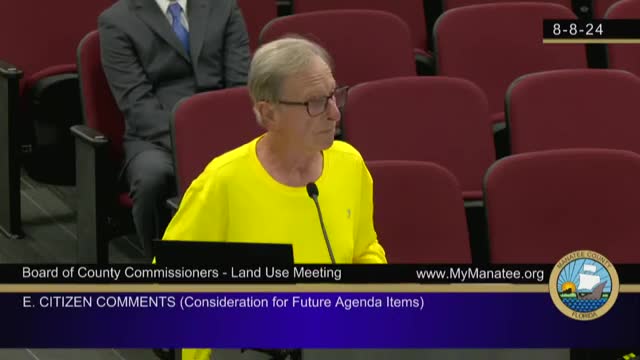Commissioner faces scrutiny over housing unit approval delays
August 09, 2024 | Manatee County, Florida
This article was created by AI summarizing key points discussed. AI makes mistakes, so for full details and context, please refer to the video of the full meeting. Please report any errors so we can fix them. Report an error »

During a recent government meeting, a discussion highlighted the significant growth in residential development within the community since 2000. Commissioner Van Ostenbridge was approached regarding the number of new residential units approved by the board, but he was unable to provide immediate figures. Following this, a formal request for information was made to the public information office, which revealed that the data was not readily available and would require time and resources to compile.
However, independent research indicated that approximately 55,000 new residential units have been approved since 2020, potentially adding around 121,000 new residents to the area. This surge in population is expected to result in an increase of about 440,000 vehicle trips daily and a demand for 15 million gallons of water. The community will also require an additional 250,000 gallons of potable water and 22 million gallons of treated wastewater each day.
The implications of this growth extend to public safety and education, with estimates suggesting the need for over 460 new law enforcement officers and 412 firefighters. Additionally, the local school system may face an influx of around 10,000 new students, raising concerns about capacity in existing educational facilities.
The meeting underscored the pressing need for strategic planning and resource allocation to accommodate the rapid growth and its associated challenges.
However, independent research indicated that approximately 55,000 new residential units have been approved since 2020, potentially adding around 121,000 new residents to the area. This surge in population is expected to result in an increase of about 440,000 vehicle trips daily and a demand for 15 million gallons of water. The community will also require an additional 250,000 gallons of potable water and 22 million gallons of treated wastewater each day.
The implications of this growth extend to public safety and education, with estimates suggesting the need for over 460 new law enforcement officers and 412 firefighters. Additionally, the local school system may face an influx of around 10,000 new students, raising concerns about capacity in existing educational facilities.
The meeting underscored the pressing need for strategic planning and resource allocation to accommodate the rapid growth and its associated challenges.
View full meeting
This article is based on a recent meeting—watch the full video and explore the complete transcript for deeper insights into the discussion.
View full meeting